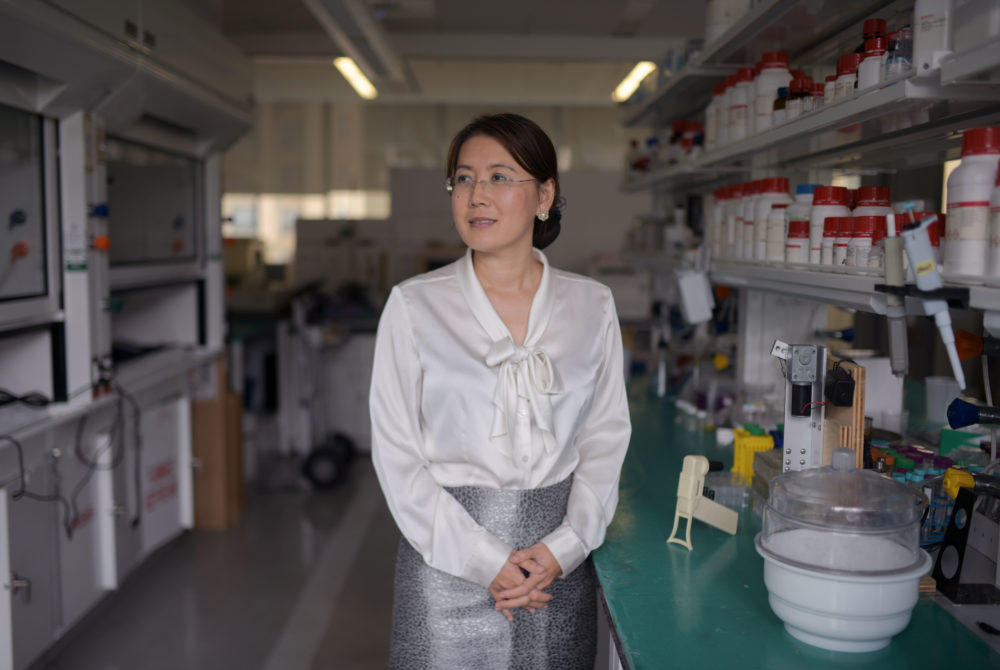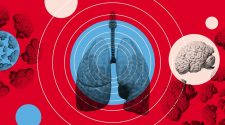Media Credit: Eric Lee | Staff Photographer
Lijie Grace Zhang, a mechanical and aerospace engineering professor, received $300,000 from the American Heart Association earlier this month to research printing heart tissue with 4D technology.
The School of Engineering and Applied Science announced late last month that a mechanical and aerospace engineering professor received $300,000 from the American Heart Association to develop a device that can print tissue used for repairing heart damage.
The AHA – a nonprofit organization that funds cardiovascular research – granted a three-year award to Lijie Grace Zhang to develop 4D technology that can print tissue used to repair parts of the heart damaged by disease and heart attacks. Cardiology experts said the 4D technology could eventually allow researchers to print entire hearts that could be used as a more viable option for heart transplants.
Zhang said she hopes her three-year research project will provide a foundation to develop ways to directly implant heart cardiac tissue onto a patient’s damaged heart.
She said the 4D printing apparatus will be similar to a 3D printer, but the 4D technology is “dynamic” – meaning the printed product can transform over time – compared to “static” 3D printing. Unlike 3D-printed tissue, 4D-printed tissue can also continue to adapt and develop as a person grows older, and the bioprinted tissue is flexible enough to relax and contract as the heart beats, Zhang said.
“If there is a child who maybe has tissue damage or even organ damage, by using the three dimensional printing you only print static tissue,” she said. “By using the four dimensional printing you maybe can design the tissue expanding with their age.”
The National Institutes of Health awarded Zhang their Director’s New Innovator award in 2014 to 3D print human tissue to use in repairing parts of the human body.
Zhang said her 4D research will explore cell structure regulation and tissue regeneration, which can treat cardiac tissue damage resulting from heart disease and heart attacks. She said the bioprinted tissue can help grow new cells and maintain cell structure.
“The major reason we work in that direction is because of the current clinical, there’s a lot of problems related to tissue organ transplantation – we don’t have sufficient donor tissue,” Zhang said.
She added that she has to study 4D technology before she can determine all of the device’s potential applications, but researchers in other fields will likely be able to use the technology to advance knowledge in their own disciplines. Zhang said she wants 4D printing to become a technology that scientists, engineers and cardiology experts often use.
The technology is relatively new to the medical field, but medical researchers have recently begun discussing potential 4D printing applications, she said.
“I really want the four dimensional printing that can be used for platform for other people, other scientist’s applications,” Zhang said. “It can be a four dimensional system, not limited to two, three generations, but other applications that are widely used.”
Cardiology and bioprinting experts said Zhang’s research can inform future approaches to developing more viable heart transplant options than are currently available for patients.
Jon Detterich, an associate professor of clinical pediatrics at the University of Southern California, said 4D technology could be “crucial” when treating children who have heart disease, because a 4D-printed heart can grow as a child develops. He said the technology could lead to more successful heart transplants because researchers can tailor the hearts to match the needs of specific patients.
Detterich said 4D bioprinting is a type of “discovery research,” or research into unknown scientific concepts, which accelerates advancements in scientific disciplines.
“This type of research creates new ideas in areas that people were not even thinking would be needed or would be valuable or would be possible,” he said.
Robert Strongin, a professor of organic chemistry at Portland State University, said the heart tissue bioprinted from the device must be subjected to rigorous scientific testing to ensure the inserted tissue does not cause any adverse health effects for the patient.
“You’ve got to be sure how the body is going to respond to it, especially if it’s going to be over a lifetime,” he said.
Nazan Puluca, a postdoctoral research fellow at Stanford University, said the printed cardiac tissue could be used to treat heart failure, which she said is the main cause of death in developed countries.
Puluca added that bioprinting heart tissue may eventually allow researchers to fill organ shortages needed for transplants, but medical researchers are still unable to print large enough quantities of cardiac tissue to sufficiently treat heart disease.
“The bioprinting field is fast growing but still a young field facing a lot of challenges,” Puluca said in an email.
This article appeared in the September 12, 2019 issue of the Hatchet.















